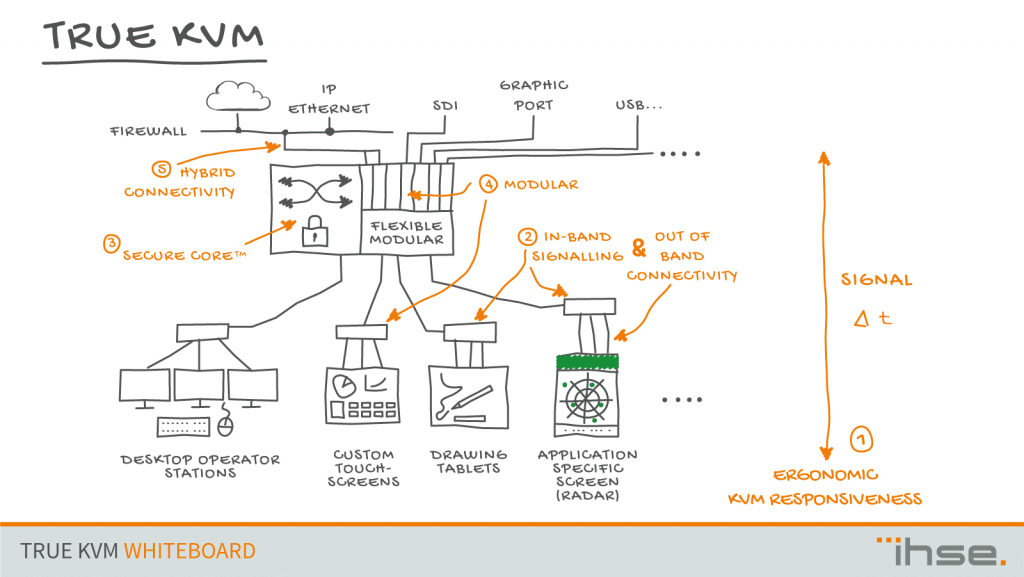
Mark Hempel
Head of Product Management
Not all KVM systems are created equal – make sure your system meets TRUE KVM standards
Welcome to the first KVM Technology Whiteboard session. I would like to share with you key findings relevant for everyone using KVM switches or extenders. Today, we are kicking it off with a very important distinction: KVM systems are different depending on their technical heritage. Actually, some are not really KVM systems, but adaptions from other applications. What appears useful at first sight may have serious consequences later on. The first Technology Whiteboards are dedicated to the key elements, which provide a TRUE KVM system.
A Keyboard Video Mouse (KVM) system´s primary purpose is to reliably connect any signal source to any signal destination and to ensure an ergonomic experience for users or operators comparable to sitting directly at the hardware processing the target applications such as a broadcast scheduling system, a camera controller or a dispatch system in a public safety control room.
TRUE KVM comprises of 5 components safeguarding investments and ensuring the performance customers require:
- Ergonomic KVM Response: ultra-fast signal processing enabling roundtrip signal delays which reduce operator stress and improve situational awareness. Mismatches in hand-eye coordination due to signal propagation times within the KVM system can even cause motion sickness in certain applications.
- In-band Signalling & Out of Band Connectivity: Flexible connections to the user stations employing diverse sets of signal protocols such as HDMI, DisplayPort, USB and even proprietary formats allow KVM systems to connect universally. All connections between the KVM switch and the user station receiver only require one line with in-band signalling to reduce infrastructure investment and allow system supervision within buildings, on campus or in wide area networks.
- KVM Secure Core®: A KVM switch that is intrinsically secure by design protecting the integrity of all signals passing through the system securing the customers communication and controls. End to end security can be best obtained when the manufacturer owns the operating software. This is true for intrinsic security as well as for update and upgrade compatibility.
- True Modular Solution: Switch and remote/RX device modularity provide a flexible and scalable KVM architecture, which ensures that you only acquire the capabilities you need when you need them. KVM switching systems are subject to economic scrutiny vs. performance needs. Being able to tailor hardware as close as possible to the current needs should still provide room for growth. It is a balancing act best achieved by a modular design both in the KVM matrix switch as well as in the user station receiver device. Especially in multi-screen applications with high video resolutions.
- Hybrid Connectivity: Connect any source and signal format to your KVM switch. In today´s world connectivity is King. A KVM system must be able to connect to virtually any type of source or protocol. Once the signal is acquired, it should be completely transparent while offering fast switching speeds between sources.
Over the coming weeks, I would like to explore in more detail what TRUE KVM means and explain step by step why each of the ingredients are essential.
If you find this information useful, please leave a comment or like – or, even better, reach out to me to discuss. IHSE will continue to lead the way in KVM and we are here to help architect your next solution or explore how we can grow our businesses together.
Yours
Mark Hempel


